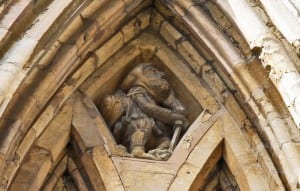Once we had recorded the new audio that was conversational (an example below is of the first audio piece), we again chose to test out the newest working version of the performance within the site.
Not only did Rachel listen to the new tour, but we also asked a fellow student studying the module to walk around the site, enabling us to have someone with no experience or prior-knowledge of our performance be an audience member. Both of these reviews and comments after the practice performance were postivie and helpful, and I feel we can now record the audio professionally and work towards the run through for our dress rehearsal. There are a few adjustments and changes that were suggested we make, such as using bird noises at the end of the last audio to fade out, perfecting the pauses within the direction and reworking some of the words we use. We also informed Rachel of our plan to scatter scallops around the performance area, which Rachel suggested we keep contained to a smaller encapsulated area. These are minor details that can be easily worked on, and overall I feel confident that our performance is nearly ready. As Paul Allain and Jen Harvie say, site specific performance is “to alter the conventional spatial practices of performance to enhance both the relationship between performers and audience and the performance’s engagement with its space and site of production” (Allain and Harvie, 2005, 148), a statement which I feel reflects what we hope our performance achieves.
For our dress rehearsal, we need to include and show Rachel:
- the introductory speech that begins our tour
- the final recording of the audio in its completion
- all of the subtle moments of coincidence
- where and what we as the performance will be doing in the tour
Alain, P and Harvie, J. (2005) The Routledge Companion to Theatre and Performance. London: Routledge.

